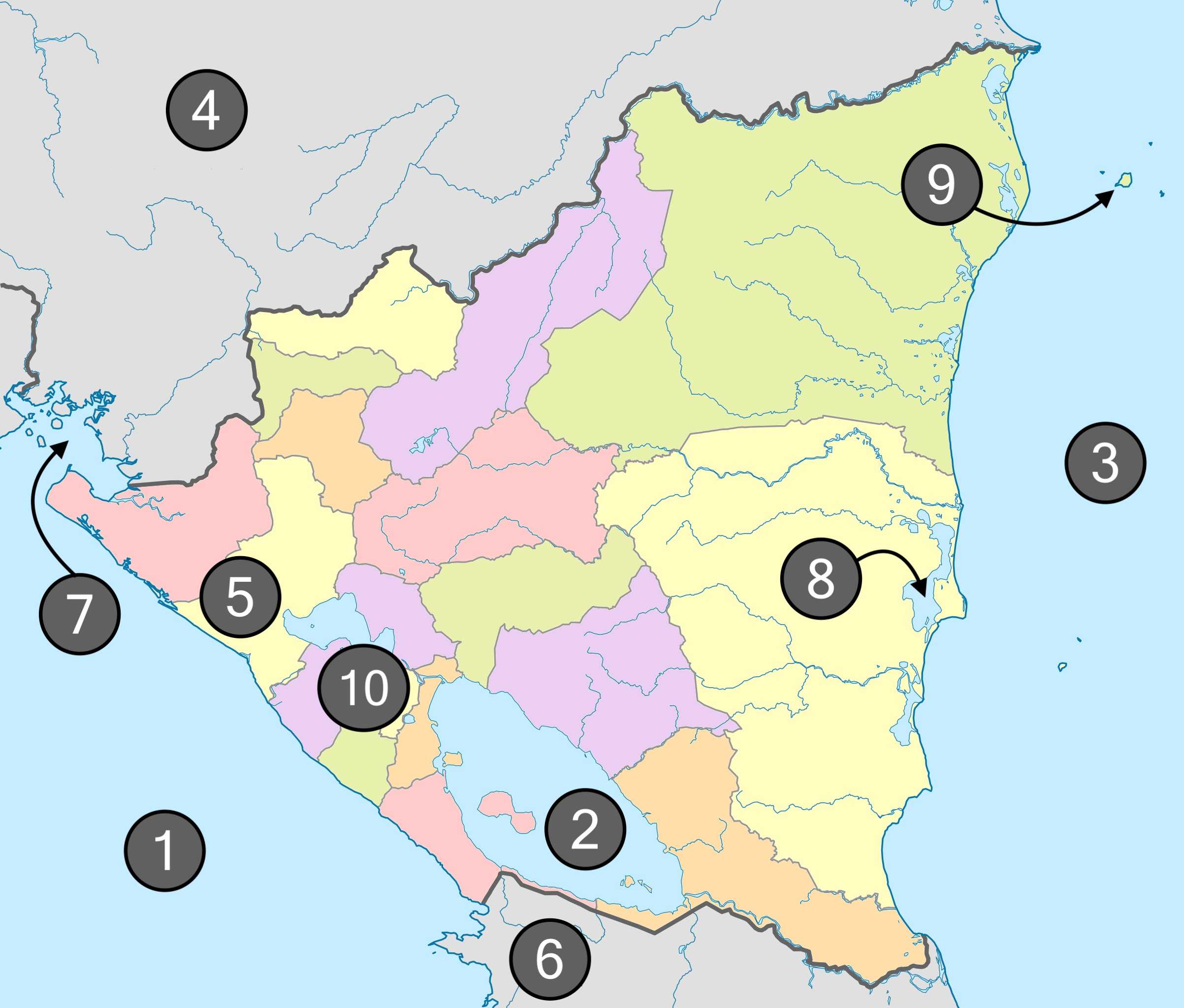
Knowing Nicaragua Trivia Quiz
This quiz takes a look at the map of Nicaragua with ten labels related to geographical points of interest. Enjoy getting to know Nicaragua!
A label quiz
by jonnowales.
Estimated time: 3 mins.


| 1. |
| 2. |
| 3. |
| 4. |
| 5. |
| 6. |
| 7. |
| 8. |
| 9. |
| 10. |